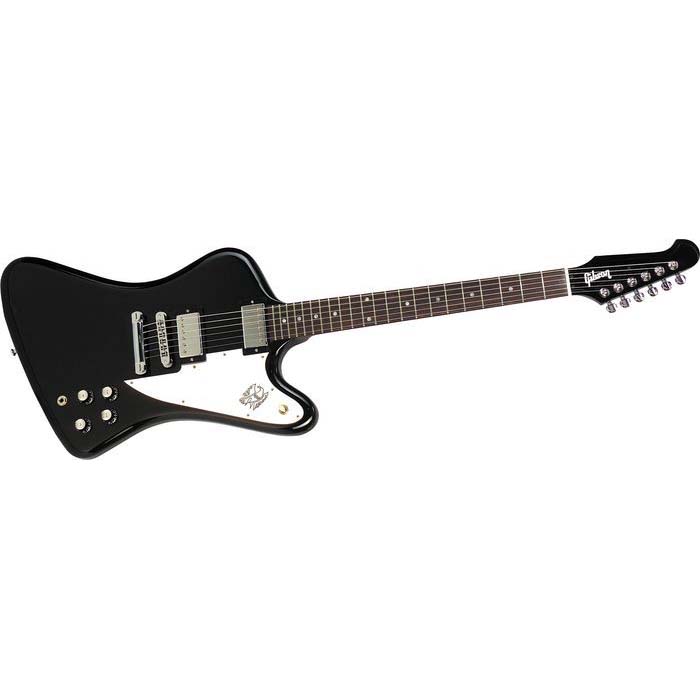In mid 1963 the Gibson Firebird began production, a baby of Ray Dietrich’s, who had roots in desigining cars in the 50’s, that if you remember had giant wings on them!
The Firebird was an attempt by Gibson to capture some of the market with a radical design that would compete with the Fender Stratocaster or Telecaster, that were widely becoming popular because of the extensive array of popular artists promoting them.
Taken from wikipedia, the series of the Firebird can be identified by the following specs:
- Firebird I – One pickup. Combination stud bridge/tailpiece. Chrome hardware. Dot inlays, no neck binding.
- Firebird II Artist CMT – A limited production instrument from the early 1980s; features a maple top, mahogany body, set mahogany neck, two standard-sized humbuckers, and toggle switches to control active Moog electronic tone controls.
- Firebird III – Two pickups, stud bridge/tailpiece and Gibson Vibrola (player could choose to use the stud or Vibrola). Chrome hardware. Dot inlays and neck binding.
- Firebird V – Two pickups, Tune-o-matic bridge with Maestro “Lyre” Vibrola; reissues feature a stop-bar tailpiece. Chrome hardware. Trapezoid inlays and neck binding.
- Firebird VII – Three pickups, Tune-o-matic bridge and Maestro “Lyre” Vibrola tailpiece. Gold hardware. Block inlays and neck binding.
- Firebird Studio – Two standard-sized Alnico humbuckers, Tune-o-matic bridge with stop-bar tailpiece. Chrome or gold hardware. Set neck. Dot inlays and no neck binding.
- Firebird XII – Two pickups, twelve string non-reversed version on the Firebird.
- Non-Reverse Firebird – Collectors’ term for a Firebird I, III, V or VII featuring a headstock with the tuners on the bass side, and a body having the bass side horn slightly longer than the treble side horn.
- Firebird X – Three Pickups, automatic 3×3 tuners, on-board digital effects and processing/output, dot-inlays, and has very little resemblance to any other Firebird models.
An interesting point to note about the guitar is that it has it’s bottom cut-away that extends further up the neck than the top cut-away. This is contrary to most guitars for it now eliminates a few frets that most guitarists chase after to get more out of their neck.


